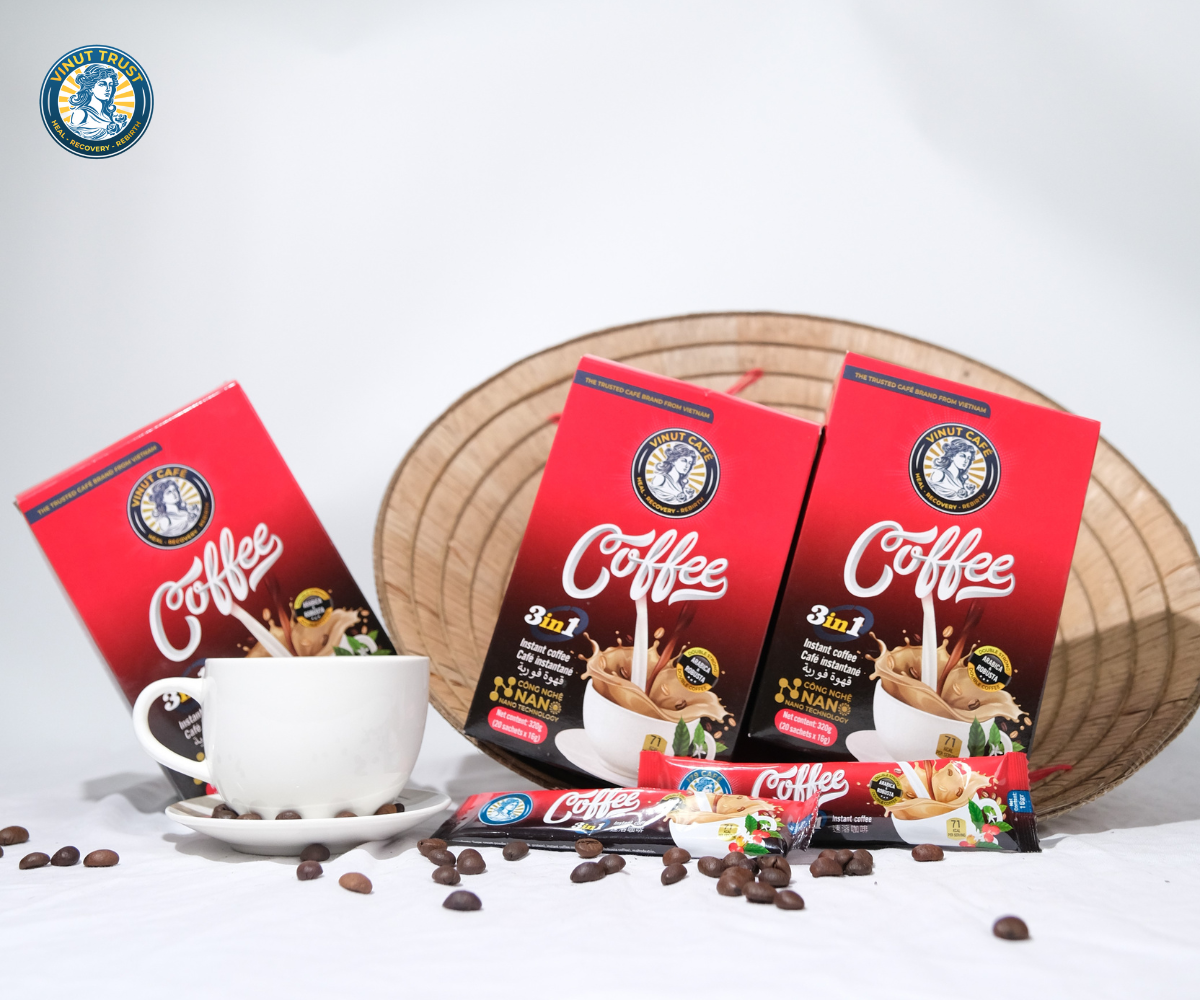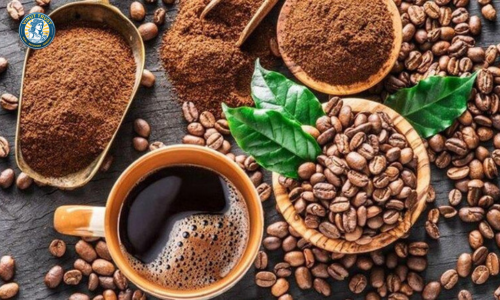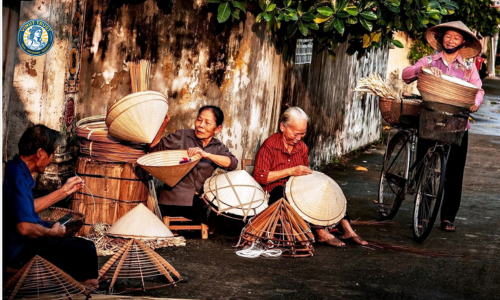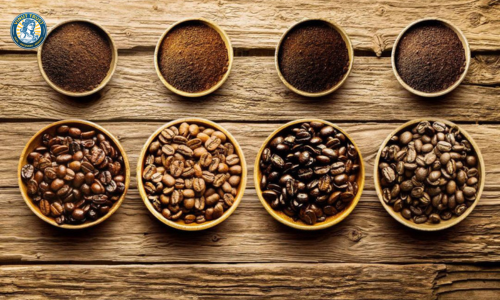Coffee and the Conical Hat: Discovering the Beauty of Vietnam

Mục lục
1. The Origins of Vietnamese Coffee: A Tradition Steeped in History

Vietnam’s coffee culture is one of the country’s most renowned traditions. Introduced during the French colonial period in the 19th century, coffee quickly became a staple in the Vietnamese diet, with the country now ranking as the second-largest coffee exporter in the world, only behind Brazil. But what makes Vietnamese coffee stand out isn’t just its mass production—it's the unique way the Vietnamese prepare and consume their coffee.
The Birth of Vietnamese Coffee
Coffee was first introduced to Vietnam by the French, who planted the first coffee trees in the highland regions, particularly in Dak Lak and Lam Dong. The climate in these areas proved to be ideal for growing coffee beans, and it wasn’t long before coffee cultivation spread across the country. Today, Vietnam produces over 1.6 million tons of coffee annually, with robusta beans making up about 95% of the production.
While coffee beans are grown in various regions, the most famous coffee-growing provinces in Vietnam are found in the central highlands, particularly in places like Buon Ma Thuot, where the fertile volcanic soil creates ideal conditions for coffee cultivation. The robusta bean, which has a more bitter, earthy flavor and higher caffeine content than its Arabica counterpart, is the variety that defines Vietnamese coffee.
Vietnamese Coffee Culture: A Unique Experience
Unlike many countries, where coffee is often a quick and solitary beverage, Vietnam has cultivated a coffee culture centered around social interaction. Coffee is often enjoyed slowly, with friends, family, or even strangers, in a relaxed and leisurely manner. The traditional way to brew coffee in Vietnam is with a phin, a small metal filter that sits atop a cup or glass, allowing the coffee to drip slowly, which gives it a rich, strong flavor.
One of the most famous coffee beverages in Vietnam is cà phê sữa đá (iced coffee with sweetened condensed milk). This drink combines the strong bitterness of Vietnamese robusta coffee with the sweet creaminess of condensed milk, creating a perfect balance that is both refreshing and energizing. Another well-known variation is cà phê trứng (egg coffee), which uses whipped egg yolks and condensed milk to create a creamy, dessert-like coffee drink.
A Reflection of Vietnam’s Resilience and Ingenuity
Vietnamese coffee culture is not just about the drink itself—it is also about the values and traditions behind it. Coffee is seen as a symbol of the hard work of the Vietnamese people, especially in the rural areas where coffee farms are typically managed by small-scale farmers. These farmers have cultivated their coffee with care and diligence, ensuring that every bean is of the highest quality.
For centuries, coffee cultivation and preparation have been a major part of the country’s agricultural landscape. Coffee farms, especially in the highlands, have sustained the livelihoods of many families, serving as a backbone to rural economies. Just as the nón lá has become a symbol of hard work and daily labor, so too has coffee come to embody the perseverance and dedication of the Vietnamese people.
2. the Conical Hat: Symbol of Tradition and Craftsmanship

The Conical Hat, or Vietnamese conical hat, is perhaps one of the most iconic symbols of Vietnam. Traditionally made from bamboo, rattan, and palm leaves, the Conical Hat is more than just a functional piece of headwear - it is a symbol of Vietnam's cultural heritage and craftsmanship. The hat is worn by people across the country, from rural farmers to urban dwellers, and serves as a universal emblem of Vietnamese identity.
The Craftsmanship of the Conical Hat
Creating a Conical Hat is a delicate and labor-intensive process that has been passed down through generations. The craftsmanship required to make these hats is nothing short of art. First, the bamboo frame is carefully shaped to form the conical structure, and the leaves, often woven into intricate patterns, are layered meticulously to form the hat’s outer shell. The hats are then sealed with a layer of lacquer or oil to make them more durable and waterproof.
In the past, women, especially in rural Vietnam, were responsible for making Conical Hat as part of their daily chores. While the craft is still practiced in rural areas today, it has also become a recognized art form. Many artisans in the Quang Nam and Hue regions are known for their exquisite craftsmanship, creating Conical Hat that is not only functional but also decorative.
The Role of the Conical Hat in Vietnamese Daily Life
The Conical Hat has many practical uses, primarily as protection from the sun and rain. In Vietnam’s agricultural heartlands, farmers, particularly women, wear the Conical Hat while working in the fields, providing them with much-needed shade during long hours of labor. The hat is also a common sight in bustling urban areas, where street vendors wear it while selling their goods.
But the Conical Hat is more than just a practical item - it carries cultural significance. In Vietnam, the Conical Hat represents the harmony between humans and nature. Its design is a reflection of how Vietnamese people have historically adapted to their environment, using natural resources to create something that serves a vital function while remaining aesthetically pleasing.
Symbol of Feminine Grace and Resilience
Throughout history, the Conical Hat has been associated with feminine grace and modesty. In traditional Vietnamese culture, women who wore the Conical Hat were often seen as embodying beauty and elegance, even as they worked hard in the fields. The Conical Hat conical shape also symbolizes the idea of shelter, as it shields the wearer from the harsh elements while creating a sense of privacy and protection.
In modern Vietnam, the Conical Hat remains a symbol of national pride. It is frequently depicted in art, photography, and literature, often used to represent the beauty of the Vietnamese countryside, the hardworking spirit of the people, and the deep cultural traditions that continue to shape the country.
3. The Meeting of Coffee and the Conical Hat: A Cultural Connection
While coffee and the Conical Hat may seem unrelated at first glance, they are intrinsically linked by their role in everyday Vietnamese life. Both serve as symbols of Vietnam’s connection to nature, tradition, and the working class.
Coffee as a Daily Ritual
For many Vietnamese people, drinking coffee is more than just a daily habit—it is a social ritual. From the bustling streets of Hanoi to the peaceful coffee shops in Ho Chi Minh City, coffee culture is woven into the fabric of daily life. It is common to see people sipping coffee in the early morning, chatting with friends, or engaging in quiet contemplation. Coffee shops are not just places to enjoy a drink—they are social hubs where people come together to connect, share ideas, and enjoy life’s simple pleasures.
The Conical Hat as a Symbol of Hard Work and Resilience
Similarly, the Conical Hat represents the hardworking spirit of the Vietnamese people. Historically, it has been worn by farmers in the fields, fishermen along the coasts, and vendors selling goods in the streets. The Conical Hat is synonymous with labor, persistence, and connection to the land. It is a symbol of Vietnam’s agrarian roots, where the vast majority of people worked the land or engaged in traditional occupations that required long hours in the sun.
Both coffee and the Conical Hat are deeply tied to the daily routines of millions of Vietnamese citizens. Coffee provides the energy needed to face the day, while the Conical Hat protects from the elements as people go about their work. Together, they create a sense of continuity, tradition, and harmony with the environment.
4. Vietnamese Coffee Varieties: From Robust to Refined

Vietnamese coffee is renowned for its bold, robust flavor, which stands in contrast to the lighter, milder varieties popular in other parts of the world. The unique characteristics of Vietnamese coffee are influenced by the country’s geography, climate, and cultivation methods.
Robusta vs. Arabica: The Two Types of Coffee Grown in Vietnam
Vietnam predominantly grows robusta coffee, which is known for its strong, earthy flavor and high caffeine content. Robusta beans are often used in espresso blends and are favored by those who enjoy a bolder, more intense coffee experience. Arabica, on the other hand, is grown in smaller quantities and has a milder, more aromatic flavor. The distinctive qualities of these two types of beans have shaped the Vietnamese coffee landscape and have influenced the way coffee is consumed in the country.
One of the most famous ways of preparing Vietnamese coffee is the use of the phin filter, a small metal filter that drips coffee slowly, allowing the rich, concentrated flavor to develop. This method results in a thick, dark brew that is often paired with sữa đặc (sweetened condensed milk) to create the beloved cà phê sữa đá.
Traditional Coffee Recipes
In addition to the traditional cà phê sữa đá, there are several other unique Vietnamese coffee recipes that reflect the country’s creativity and flair for flavors. Some of the most notable include:
Cà Phê Trứng (Egg Coffee): A rich, creamy coffee made with egg yolk, condensed milk, and sugar. This is a sweet and velvety drink that has gained popularity among locals and tourists alike.
Cà Phê Sữa Nóng (Hot Coffee with Condensed Milk): A warm and comforting version of cà phê sữa đá, perfect for cooler weather or those who prefer a hot beverage.
Cà Phê Đen (Black Coffee): A simple, no-frills black coffee that showcases the bold, bitter flavor of the robusta bean.
5. The Cultural Significance of Coffee and Conical Hat in Vietnam’s Identity
Coffee and the Conical Hat both embody essential aspects of Vietnamese culture. They symbolize the country’s deep connection to its agricultural roots, the importance of community, and the resilience of the Vietnamese people.
Cultural Significance in Modern Vietnam
Today, both coffee and the Conical Hat continue to play vital roles in Vietnam’s modern society. In urban areas, coffee shops serve as gathering places for students, professionals, and tourists, while the Conical Hat remains a symbol of rural life and tradition. The fusion of these two symbols is seen in art, fashion, and lifestyle, reflecting a blend of old and new Vietnam.
As Vietnam continues to grow economically and socially, these symbols remind us of the country’s rich heritage. They evoke memories of a time when life was simpler, yet deeply connected to nature and community. Whether it’s sipping a cup of coffee under the shade of a Conical Hat or exploring the bustling coffee shops of Saigon, these two icons offer a glimpse into the soul of Vietnam.
6. Coffee and the Conical Hat in Vietnamese Tourism
For tourists, the combination of coffee and the Conical Hat offers an authentic Vietnamese experience. Visitors to Vietnam often seek out local coffee shops to experience the country’s unique coffee culture, and many tourists are drawn to the Conical Hat as a souvenir or symbol of their trip. Whether they are enjoying a traditional coffee in a local café or participating in a hands-on coffee-making workshop, tourists leave with a deeper appreciation for the cultural significance of these two iconic elements.
7. Conclusion: Celebrating Vietnam’s Rich Cultural Legacy
In conclusion, coffee and the Conical Hat are more than just everyday objects; they are symbols of Vietnam’s culture, tradition, and history. While they serve different purposes—one fueling the body with energy and the other protecting from the elements—they both embody the Vietnamese spirit: hardworking, resilient, and deeply connected to the land.
As we sip on a cup of rich, strong Vietnamese coffee or admire the elegant simplicity of a the Conical Hat, we are reminded of the beauty of tradition the enduring spirit of Vietnam. The combination of these two elements offers a perfect reflection of the country’s past, present, and future, making them integral to the Vietnamese identity.
Whether you are a local or a visitor, the pairing of coffee and the Conical Hat provides a unique opportunity to experience the heart of Vietnam. So, the next time you enjoy a cup of coffee in Vietnam, take a moment to appreciate the centuries of tradition that have shaped this incredible country and its people.
